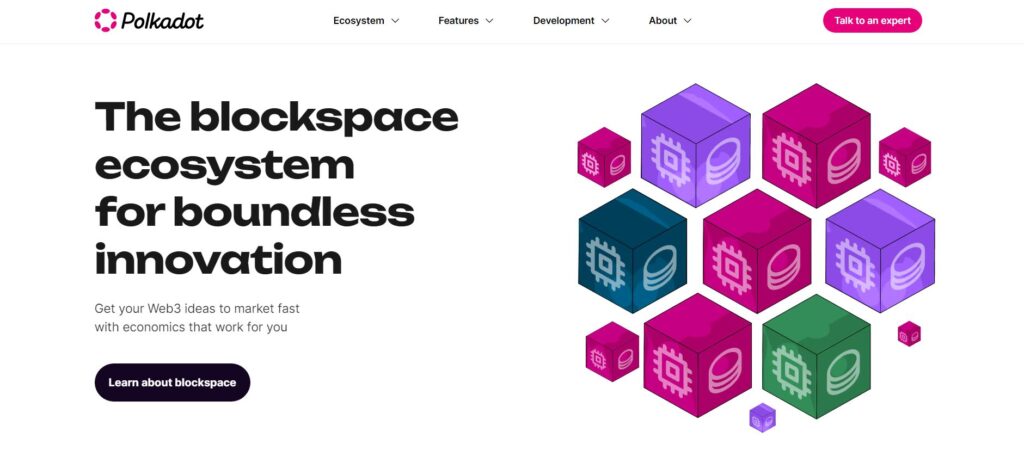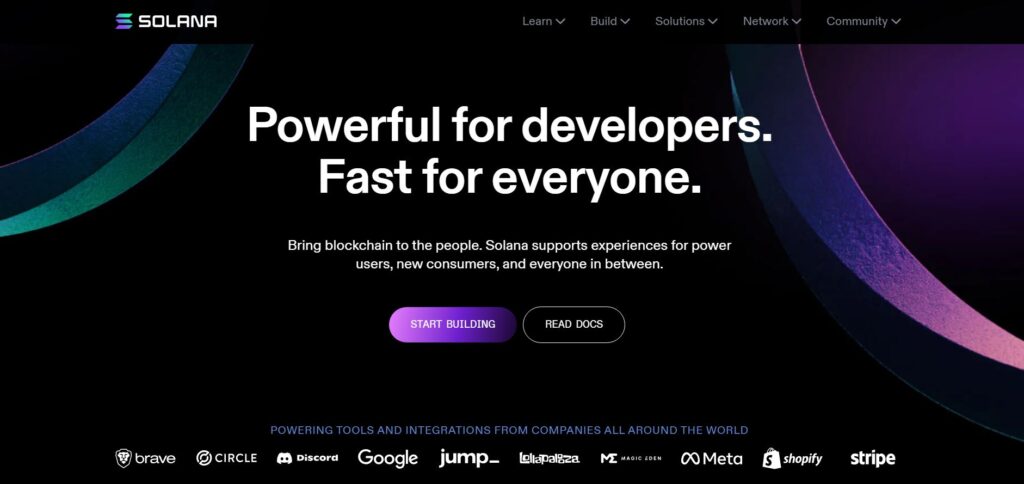|
Getting your Trinity Audio player ready...
|
The blockchain triumvirate of Ethereum, Polkadot, and Solana represent three leading smart contract networks driving decentralized app development. Each offers unique capabilities for Web3 builders at different stages of maturity. Evaluating their potential requires analyzing their technology, adoption metrics, and roadmaps.
Ethereum

Ethereum is the first and most popular smart contract platform. It has the largest ecosystem of developers, DApps, and institutional investment. However, Ethereum is also plagued by congestion and high gas fees.
Ethereum’s first-mover advantage has given it a significant lead in terms of adoption. It is the most widely used smart contract platform, with over 1 million active addresses and over 3,000 DApps deployed on its network. Ethereum is also the platform of choice for many institutional investors, who have poured billions of dollars into the ecosystem.
However, Ethereum’s popularity has also led to congestion and high gas fees. Gas fees are paid to miners to process transactions on the Ethereum network. When the network is busy, gas fees can skyrocket, making it expensive to use Ethereum.
To address these challenges, Ethereum is undergoing a major upgrade to Ethereum 2.0. Ethereum 2.0 will introduce a number of new features, including sharding and proof-of-stake consensus. Sharding will divide the Ethereum network into multiple shards, which will increase its scalability. Proof-of-stake consensus will make Ethereum more energy-efficient and secure.
Polkadot

Polkadot is a multi-chain framework that provides greater scalability than Ethereum. It allows developers to build parachains, which are independent blockchains that can communicate with each other. Polkadot also facilitates cross-chain transfers and pooled security between chains.
Polkadot is a newer platform than Ethereum, but it is quickly gaining traction. A number of high-profile projects are building on Polkadot, including Acala, Moonbeam, and Shiden Network. Polkadot is also being used by enterprises, such as Chainlink and Google Cloud Platform.
Polkadot’s multi-chain architecture gives it a number of advantages over Ethereum. First, it allows for greater scalability. Each parachain on Polkadot can process its own transactions, which means that the network can handle more transactions overall.
Second, Polkadot’s cross-chain interoperability allows users to easily transfer assets and data between different blockchains. This is a critical feature for the development of a truly decentralized web.
Solana

Solana is a high-speed, low-cost smart contract platform. It can process up to 50,000 transactions per second (TPS), which is far more than Ethereum or Polkadot. Solana is also known for its low gas fees.
Solana’s speed and scalability make it a good choice for developers who are building DApps that require high throughput or low transaction fees. Solana is also being used to develop new use cases, such as decentralized exchanges (DEXs) and non-fungible tokens (NFTs).
However, Solana is still a relatively new platform, and it has not yet been fully tested. There have been some concerns about centralization and potential bottlenecks. Recent network outages have also highlighted stability challenges.
Conclusion
Ethereum, Polkadot, and Solana are all leading smart contract platforms with unique strengths and weaknesses. Ethereum has the largest ecosystem, Polkadot offers greater scalability, and Solana is known for its speed and low fees. The best platform for you will depend on your specific needs.
I’m the cryptocurrency guy who loves breaking down blockchain complexity into bite-sized nuggets anyone can digest. After spending 5+ years analyzing this space, I’ve got a knack for disentangling crypto conundrums and financial markets.



